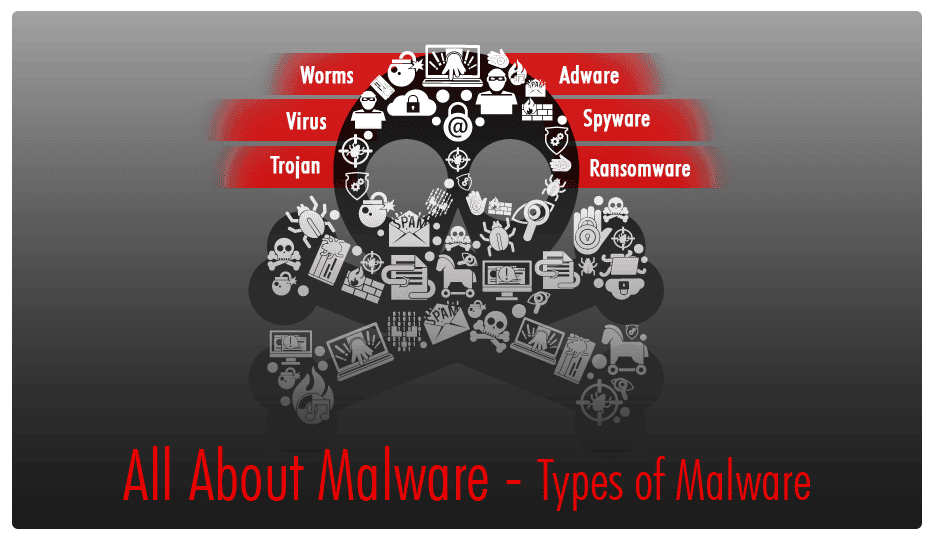
All About Malware – Types of Malware
This is Part Two of the Three Part Series of Malware Blogs.
A short recap of Part One
As we saw before, malware is harmful code that hijacks your system and causes damage discreetly. Monetary gain and illegal access to private data are two foremost motivations behind a malware attack. We have learned of the many ways in which it might infect your system. But are all malware modules the same? Let us find out.
Types of Malware and Their Functions
- Virus: Following the literal medical terminology, a virus latches itself onto clean files and infects other clean files. It can spread rapidly without detection, damaging a system’s core functionality and deleting or corrupting files. A virus typically spreads as an executable file (.exe).
- Trojans: This type of malware takes its name from the historic coup in which Achaeans hid inside a giant horse sculpture and attacked the city of Troy. This kind of malware disguises itself as legitimate software which may have been internally tampered with. It acts on its own and can find or create security holes to allow entry of other harmful code to attack the system.
- Worms: Worms use network as their point of entry. Once inside a system, worms infect other systems either local or across the internet, by using network interfaces. The chain reaction worms leave in their way make them formidable.
- Spyware: Well, this malware has a pretty self-explanatory name: it spies on you. It hides in the background and monitors your online activity, and gleans off your passwords, credit card numbers, surfing habits, and other sensitive, private data.
- Ransomware: A virtual form of kidnapping, ransomware works by creating a total lockdown scenario. It steals control of your system and enforces a state of panic by refusing to surrender control until you pay up huge amounts of money.
- Adware: This malware aims to annoy rather than damage. Adware bypasses your security and forces popup ads aggressively. Often, these ads are not relatable to you, and their hidden agenda is to attempt easy access for other malware to infect your system.
Besides these, new attacks include keyword monitoring, bot attacks and many more. Whenever technology opens its doors to newer avenues, cyber criminals evolve parallely to upgrade their attacking style. But don’t worry, there are many ways you can safeguard yourself against a malware attack. We will go through these in the next section of the blog, coming soon.
The most common ways that malware attacks are carried out is through email. Proper knowledge is, of course, necessary to prevent such attacks, but there are sophisticated email security measures that can be taken.
This is the end of Part Two of the Three Part Series of Malware Blogs.
Logix specializes in Secure Email Hosting on Cloud, Hybrid Messaging, and Microsoft CSP. We are a Top Platinum Partner in the ASEAN region, with services regarding Cloud Email & Collaboration and are also partnered with IceWarpon premise messaging & collaboration setups. We also provide SLA backed email solutions. For a complete understanding of our email security solutions, visit this link.